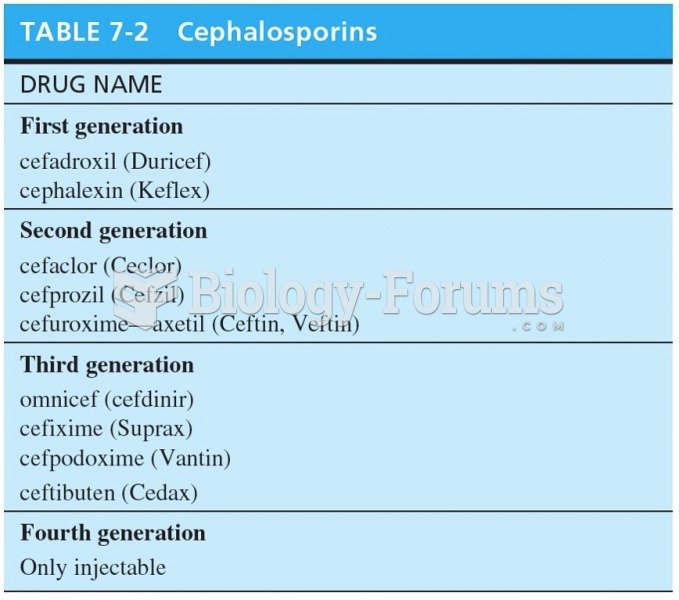Answer to Question 1
Correct Answer: 4
Rationale 1: Aminoglycosides can be safely administered to this client.
Rationale 2: Fluoroquinolones can be safely administered to this client.
Rationale 3: Sulfonamides can be safely administered to this client.
Rationale 4: Five percent to ten percent of clients who are allergic to penicillin also exhibit hypersensitivity to cephalosporins.
Global Rationale: Although sometimes prescribed for patients who are allergic to penicillin, nurses must be aware that 5 percent to percent of the patients who are allergic to penicillin will also exhibit hypersensitivity to cephalosporins. Despite this small incidence of cross-allergy, the cephalosporins offer a reasonable alternative for patients who are unable to take penicillin. Cephalosporins are contraindicated, however, for patients who have experienced anaphylaxis following penicillin exposure.
Answer to Question 2
Correct Answer: 2
Rationale 1: Penicillin targets the bacteria's cell wall, not its DNA.
Rationale 2: Most penicillins target the enzyme that adds cross-links to the peptidoglycan layers in the cell wall.
Rationale 3: Penicillin targets the bacteria's cell wall, not its protein synthesis.
Rationale 4: Penicillin targets the bacteria's cell wall, not its internal structure.
Global Rationale: Because of the critical importance of their cell walls, bacteria spend a lot of time and energy building them. At least 30 different bacterial enzymes participate in their construction. Some of these enzymes are targets for penicillins and related antibiotics and are called penicillin-binding proteins (PBPs). Most penicillins affect transpeptidase, which is the final PBP enzyme in the construction of the cell wall that adds the cross-links to the peptidoglycan layers. Without the cross-linking, the cell wall becomes weakened and bulges due to the high osmotic pressure inside the cell. The bacterial cell eventually lyses (disintegrates).







